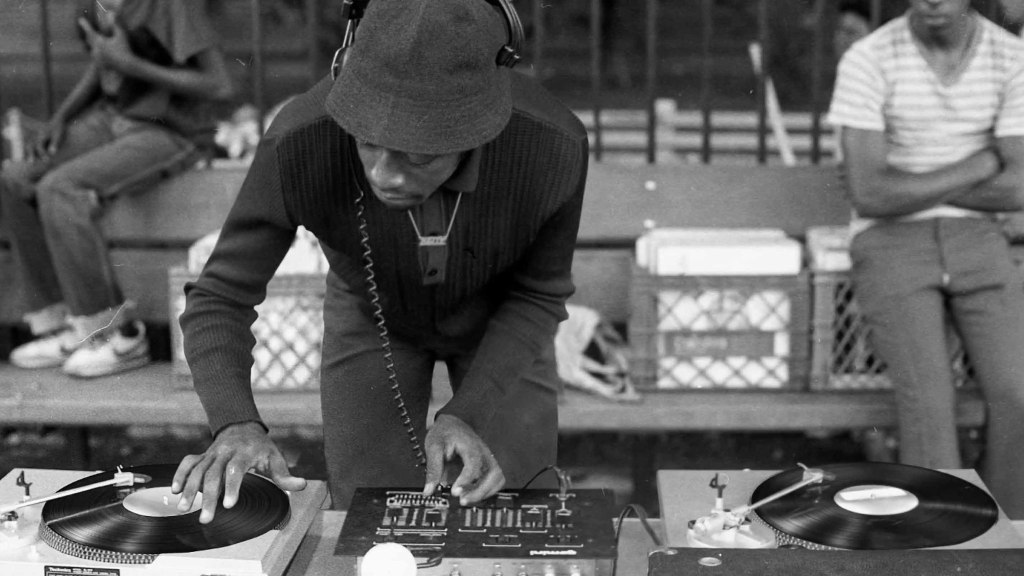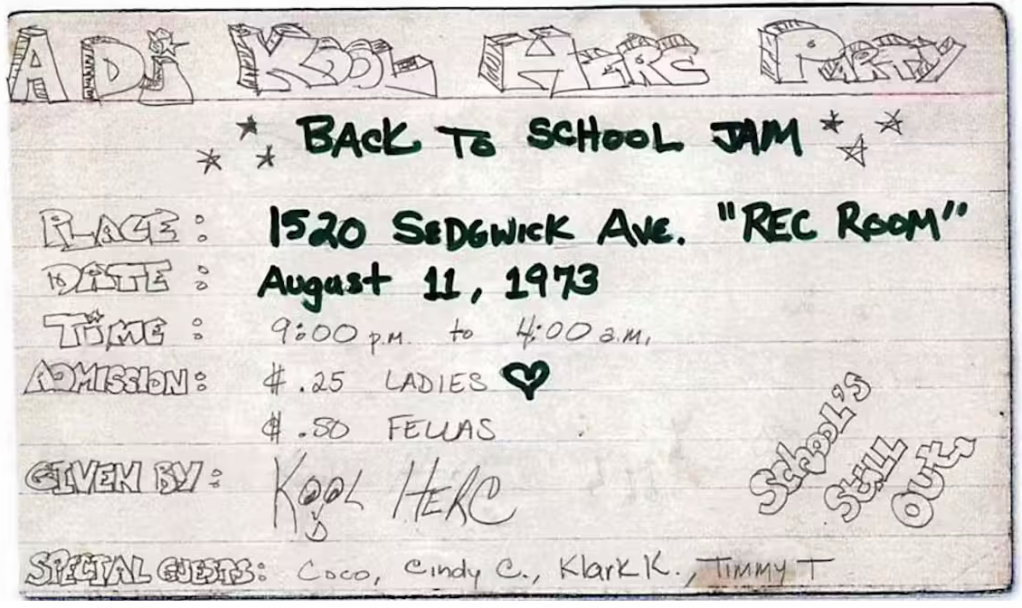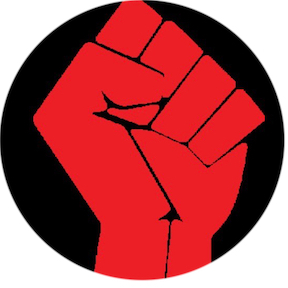
DJ Kool Herc performing at a block party (Photo credits: Icon Collective)
By Fiona Bautista
On Aug. 11, 1973, the world was changed forever.
In an era of political tension and economic troubles, residents of the Bronx were divided in more ways than one–the construction of the Cross Bronx Expressway being the most significant contributor.
Prior to the building of this freeway, the neighborhoods that would be most impacted by its creation were considered “among the most racially integrated in the country.” However, many white residents fled to other neighborhoods as challenges arose, leaving Black and Brown communities in the wake of the destruction. The conditions of these neighborhoods deteriorated, resulting in the rise of crime and poverty.
Despite these hardships, the youth of the displaced communities found joy through block parties. One party, in particular, resulted in the creation of the genre we know and love today.
DJ Kool Herc, born Clive Campbell, decided to host a back-to-school party with his sister at their apartment complex on 1520 Sedgwick Ave. There, he premiered the “break-beat” technique, which elongates the climax of a song by switching between two turntables to loop the break. This technique marks the birth of hip-hop.
Hip-hop was quick to catch on after that, developing its own culture and providing communities with a platform to express themselves.
Artists in the early stages of American hip-hop often called out corruption, violence, and the poor quality of life in their neighborhoods. Hip-hop gave individuals a voice.
Hip-hop is more than just music, though. Four core elements now define the genre–DJing, MCing, breaking, and writing.
DJing involves the beats and music; they are the foundation. Defined as “disc jockeys,” DJs work intimately with turntables to switch from one song to another and create new and exciting sounds that audiences can appreciate.
MCing, in simple terms, is rapping. Originating as somewhat of a sidekick to the DJ, MCs–also known as masters of ceremonies–were people that simply made announcements. Over time, they became more prominent figures, freestyling and commanding the room to keep people engaged and the energy up.
Breaking is the dance style that defines hip-hop. Because the genre is so heavily based on off-the-dome decisions, breaking takes inspiration from numerous dance styles and combines them to create something unique.
Lastly, writing is the graffiti art that is so often associated with the “look” of hip-hop. Consisting of bright colors, bubble and block lettering, and the challenging of boundaries of traditional art, it predates the other three defining elements of the genre.
With the speedy development of hip-hop, it comes as no surprise that it became a global sensation. By the 1980s, the music genre’s influence expanded to international territories.
Aug. 2023 marks the 50th anniversary of hip-hop. However, this is a year-long celebration. There will be numerous events around the world intended to highlight hip-hop culture. This includes concerts, battles, exhibitions, and several iconic hip-hop figures coming together to honor the golden anniversary.
One way the music industry has already celebrated the anniversary was at the 2023 Grammy Awards, where artists shared music’s biggest stage to perform a tribute to hip-hop’s rich history. This showcased legendary figures such as Grandmaster Flash, Public Enemy, LL COOL J, Busta Rhymes, Missy Elliott, Ice-T, Queen Latifah, Salt-N-Pepa, and more.
You can celebrate the 50th anniversary of hip-hop with The Rebirth Project now on Spotify!

